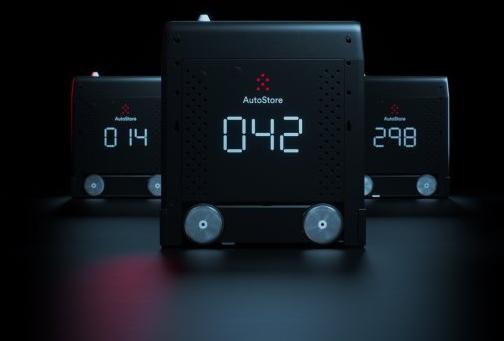
Autostore introduces ‘Black Line’ warehouse robots
AutoStore, the robot technology company that invented Cube Storage Automation for warehousing, has introduced Black Line, a new line of AutoStore modules made for users with very high throughput requirements.
Black Line, joins the Red Line in the portfolio of AutoStore systems. In modular AutoStore fashion, Black Line and Red Line modules will mix; system designs can be refined with both lines working together.
The Black Line features the new B1 Robot, a slimmed down, lighter robot with a cavity design. The B1 is packed with innovative features including exchangeable BattPack Lithium-ion battery technology and Direct Drive Wheels.
Cavity design is sleeker, using less space in an area where space is everything. Almost half the size of R5, the B1 makes room for busier robot clusters. The bin lift mechanism is cenrtally mounted and high, to carry bins within the robot body.
Using the higher body and cavity design, the B1 can carry and dig taller bins. With a top storage layer for digging and sorting, no bins block the grid, allowing for more sophisticated driving patterns and higher speeds.
B1 will never rest, not even for charging. The patented BattPack technology is a state-of-the-art battery concept where the robot will pick up a fully charged battery whenever needed.
The BattPack ejection tray can drop and pick up battery-units at BattPack stations placed around the grid. Clever battery management insures battery health and that the robot is always getting the closest charged battery.
To ensure that B1 can travel at higher speeds, and accelerate quickly, it has individual direct drive motors in each wheel base, removing the need for drive belts. Robot acceleration is 75% higher than that of R5. On average B1’s delivery performance is 20% higher than R5.
Higher speed and acceleration are of great significance with large grid designs where driving distances are longer.
The RelayPort modular workstation consists of a picking module and buffer modules. Each picking station can have from 3 to 6 buffer modules. The robots, both B1 and R5, will be able to reach the put positions from any direction.
With the buffering system, robots will retrieve a bin, going back to the grid every time a bin is dropped off. After a bin has been closed by the operator it will be sent to the to-grid buffering positions.
In this way a bin will always be available for pick up when the robots deliver bins to the port.
The minimum exchange time for this port is 1.5 seconds. With 6 buffer modules in place the Port can handle up to 650 Bins per hour with the B1, and up to 450 bins per hour with R5.
In order to ensure the Port can be accessed by service personnel, there is an access area between it and the Grid. This area is accessible from all sides, giving the Service technician the opportunity to reach the port from different angles.


